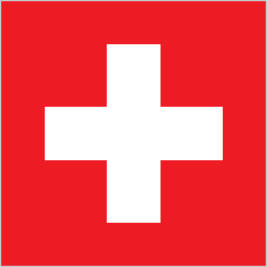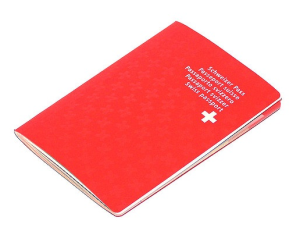Last updated on March 16th, 2022
Switzerland, officially the Swiss Confederation, is a landlocked country situated in western, central, and southern Europe. It has an area of 41,277 square km. Bern is its capital and Zürich is its largest city. German, French, Italian, and Romansh are its official languages. Swiss franc (CHF) is its official currency. Its five land bordering countries are Austria, Liechtenstein, France, Italy, and Germany.
It is geographically divided between the Alps, the Jura mountains, and the Swiss Plateau. The majority of the Swiss population lives in the plateau. With these 139 facts about Switzerland, let’s learn more about its traditional culture, people, economy, history, tourism, mountain ranges, cities, and more.
1. Switzerland is slightly less than twice the size of New Jersey.
2. Zurich and Geneva are among the top ten most livable cities in the world. They rank second and eighth on the list, respectively.
3. The Swiss franc is the official currency of Switzerland.
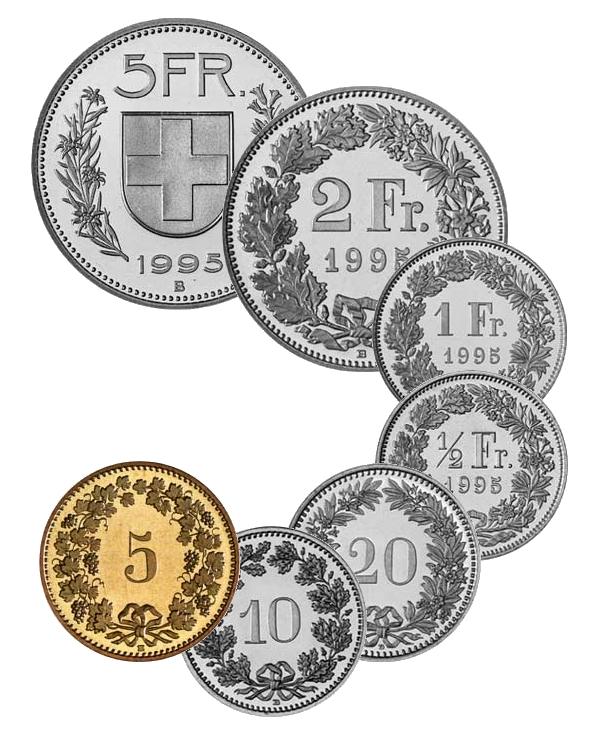
4. Geneva, Switzerland is also home to the second-largest of the four major office sites of the United Nations.
5. Swiss consumption of chocolates per capital is the highest in the world. They have invented techniques like conching and tempering to help them produce world-class chocolates.
6. Mountaineering, snowboarding, and skiing are some of the popular sports in Switzerland.
7. Half of the luxury watches produced in the world come from Switzerland. Brands like Tissot, TAG Heuer, Rolex, Patek Philippe, and Longines are all Swiss.
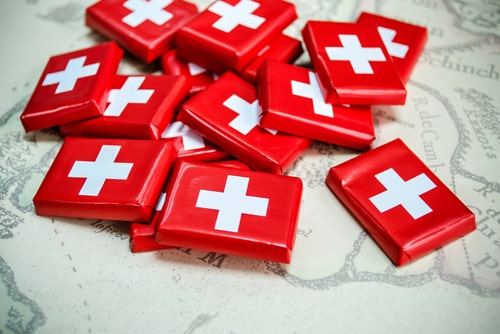
8. The large Hadron Collider in the world’s largest particle physics laboratory– CERN – is in Switzerland. It has been established under the ground.
9. Bern is the capital of Switzerland. Zurich is its largest city.
10. Switzerland shares a land border with Germany, Austria, Liechtenstein, Italy, and France.
11. Switzerland has enough underground bunker capacity that it can hide its entire population in case of a nuclear war.
12. Assisted suicide in Switzerland is legal. It is also legal in China, Belgium, Canada, and other few countries. There is, however, different legislation regarding the circumstances under which this is legal.
13. Switzerland provides nearly all CO2-friendly electricity to its citizens. 39% of electricity comes from nuclear power plants, while 56% is generated by hydroelectric power plants.

14. A giant three-legged chair in Geneva, Switzerland is dedicated to the opposition of using land mines. It is known as “The Broken Chair.”
15. The “Anti PowerPoint Party” is a political party in Switzerland that works to decrease the use of PowerPoint in professional presentations. They claim that the PowerPoint software is economically harmful.
16. Animals are also represented by lawyers in Switzerland’s courts. Once, a fisherman was prosecuted for taking too long to catch a Pike.
17. 23% of Switzerland’s total population of almost 8 million consists of foreigners.
18. The divorce rate in Switzerland is about 43%, and people marry late: men at the age of 31.8 years and women at 29.5 years.
19. The average age for Swiss women to have their first child is 30.4 years, which makes them the oldest women in Europe to do so.
20. One hundred tons of hash and marijuana are used in Switzerland every year by 600,000 people.
Map of Switzerland
21. Highly skilled people form the basis for Switzerland’s economy. Sectors such as banking, insurance, pharmaceuticals, biotechnology, microtechnology, etc. employ these skilled people.
22. Switzerland: the best place in the world to be born, according to a recent quality-of-life index.
23. It is funny to note that there are more banks in the Switzerland than dentists.
24. Fuel economy in Switzerland is measured in “quantity per distance” (liters per 100 km).
25. If you were a teacher in Switzerland, you would enjoy at least 12 weeks’ vacation, and you would be paid highly: on an average – $68,000 per year (est. 2014).
26. There are 5 hospital beds per 1000 people in Switzerland (est. 2011).
27. Bank tellers are protected by bulletproof glass in Switzerland.
28. Drivers of public busses can be ticketed for traffic violations.
29. Since 1815, Switzerland has not been involved in any military conflict. It has strong relations with its neighboring countries and is also a part of some international and UN organizations.
30. Almost half of its population possesses guns. In spite of this fact, there were just 0.5 murders per 100,000 compared to five per 100,000 in the U.S.
31. Heavy snowfall in Switzerland during the night time will often accumulate enough snow on the roads to make them unusable. However, the roads will always be cleaned by 8:00 in the morning.
32. Switzerland is one of the two countries in the world to have a square flag. The other is Vatican City.
Flag of Switzerland
33. A ring made entirely out of diamonds was sold by a Swiss jeweler for a whopping $68 million.
34. Swiss chocolatiers Peter and Henri Nestlé invented milk chocolate in 1875.
35. The very first Nobel Peace Prize was awarded to Jean Henri Dunant, a Swiss, in 1901. He is the founder of the International Committee of the Red Cross. Sixteen people from Switzerland have won the Nobel Prize in various fields. To see the full list of the Nobel Prize winner by country, visit this link.
36. Switzerland does not have a president as chief of state.
37. “The World’s Smallest Toolbox”– the Swiss Army knife – was invented by Karl Elsener. There are four different models available, and they can have a barometer, altimeter and even a USB memory card.
38. The famous equation E=MC2 was devised by Albert Einstein in 1905, while he was in Switzerland.
39. Charlie Chaplin spent the last 25 years of his life in Switzerland.
40. The world’s largest nuclear shelter, the Sonnenberg Tunnel, is in Switzerland. It can house up to 20,000 individuals for an extended period of time during a nuclear emergency.
41. Switzerland’s defense is well prepared for the event of an attack. It has already deployed technology to block access via roads, bridges, and railways across 3000 locations.
42. The smallest vineyard under the ownership of Dalai Lama is located in Switzerland.
43. The World Wide Web was invented by Tim Berners Lee in Switzerland in 1989.
44. More films produced by India are shot in Switzerland than in any other country.
45. The first waterproof watch was invented by Rolex in 1927 in Switzerland.
46. Nescafe, the world’s first instant coffee, was invented in 1938 in Switzerland, too.
47. In Latin, Confoederatio Helvetica is Switzerland’s official name, which is why Switzerland’s abbreviation is CH.
About solar-powered flight made in Switzerland
48. Switzerland is also the only country in the world to have built an airplane that is powered by solar energy.
49. The plane named “Solar Impulse 2”, is the first plane in the world to have completed 40,000 kilometers without a single drop of fuel.
50. The aircraft—Solar Impulse 2–was in flight for consecutive 5 days and night, and by doing so, it became the first solar-powered aircraft to accomplish an oceanic crossing.
51. Abu Dhabi, UAE’s capital city, was chosen as the start and finish city for the first solar powered flight completed by Solar Impulse 2. The city was chosen for its climate and infrastructural benefits that were required to complete the flight. Learn more at their official website here.
Facts about people and society in Switzerland
52. Switzerland’s resident population has grown from 3.3 million in 1900 to 8.3 million in 2017.
53. Today, there are almost 2 million resident foreigners in Switzerland.
54. In 2017, almost 18% of the Swiss population is above the age of 64 years.
55. Did you know that the Italians are the largest foreign community in Switzerland, followed by German, Portuguese and French communities?
56. To apply for Swiss citizenship, one must have lived in Switzerland for at least 12 years.
57. Three-quarters of Swiss population lives in towns and cities, making the country mainly urban.
58. Swiss people are process oriented.
59. People also like to go outdoors more often than not. Swiss people trek, ski, jog, walk, run, and engage in many other outdoor activities.
60. Switzerland is a small but a famous country in the heart of Europe.
61. Switzerland has the highest nominal wealth per adult and it is one of the most developed countries in the world.
62. Switzerland was not involved in any of the two world wars; World War I (Jul 28, 1914 – Nov 11, 1918) and World War II (Sep 1, 1939 – Sep 2, 1945.)
63. Air and water pollution, loss of biodiversity, and acid rain are some environmental issues in Switzerland.
64. Switzerland’s crime and unemployment rates are amongst the lowest in the world. The country is also famous for its technological innovation and strong banking system.
Facts about prominent mountain peaks, Alps and Swiss Alps
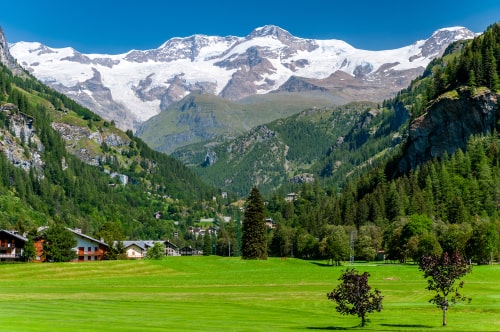
65. Most important peaks: Monte Rosa (most elevated), the Finsteraarhorn (most prominent) and Piz Bernina (most isolated) are the three most prominent peaks of Switzerland.
66. Switzerland has a whopping 4400 summits (peaks) that are over 2000 m in height.
67. The total area of the Alps is 192,753 square kilometers, of which only 14% is in Switzerland.
68. The Alps is credited with being the youngest, largest, highest, and most densely populated mountain range in Europe. It is estimated to have formed some 45 million years ago.
69. The region of the Alps which falls in Switzerland is referred to as Swiss Alps.
70. Switzerland is one of the most mountainous countries in Europe as 65% of its total land mass is covered under the Alps.
71. The majority of the highest peaks, 48 out of the 82, that are higher than 4000 m are in Switzerland, and the remaining are also within 20 kilometers of the Swiss border.
72. The first international group of travelers visited Switzerland in 1863. The group was organized by Thomas Cook.
Facts about railways, famous Swiss tunnels
73. Jungfraujoch railway station, the highest railway station in Europe, is in Switzerland. It is built at an altitude of 11,332 ft above sea level. It began its operation in 1912.
74. Switzerland has built plenty of rail tunnels to ease transportation, which was most affected because of its geographical features.
75. They built the Gotthard Rail Tunnel (connecting Switzerland – Italy, Switzerland – Germany, and Switzerland – Austria.)
76. The Simplon Tunnel connected Rhone valley with Italy in 1906.
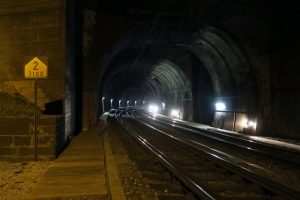
77. The Gotthard Base Tunnel–the world’s longest rail tunnel–opened in 2016 goes through the Alps. It is 57 kilometers long. It can effectively reduce the travel time between Zurich and Milan by at least 30 minutes. The Gotthard Road Tunnel in Switzerland which is 16.9 kilometers long is the second longest road tunnel in the world after the Lærdal Road Tunnel in Norway which runs for 24.51 km.
78. Switzerland contains 3,100 miles of the railway network.
. . . continue reading on the next page.

